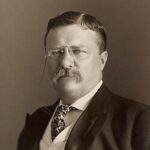Theodore Roosevelt’s acquisition of the Panama Canal Zone represents one of America’s most controversial imperial decisions. The Roosevelt Panama Canal saga began when Colombia rejected the Hay-Herrán Treaty in 1903.
The Revolutionary Decision
Roosevelt supported a Panamanian independence movement against Colombian rule in November 1903. Philippe Bunau-Varilla, a French engineer, coordinated the revolution with American backing. The USS Nashville arrived in Colón to prevent Colombian troops from suppressing the revolt. Within days, Roosevelt recognized Panama as an independent nation. 📊 The timing was remarkably convenient for American interests.
Securing Canal Rights
The newly independent Panama immediately signed the Hay-Bunau-Varilla Treaty. This agreement granted the United States permanent control over a 10-mile-wide canal zone. America paid Panama $10 million plus $250,000 annually for these unprecedented rights. 💰 The terms far exceeded what Colombia had rejected just months earlier.
Roosevelt’s Bold Admission
Years later, Roosevelt publicly boasted about his decisive action. “I took the Canal Zone and let Congress debate,” he declared in 1911. ⚠️ This admission confirmed critics’ accusations of American imperialism and violation of Colombian sovereignty.
Impact:
The Roosevelt Panama Canal Zone acquisition created lasting diplomatic and economic consequences across Latin America. Colombia severed diplomatic relations with the United States for years following this imperial intervention.
Immediate Diplomatic Fallout
Latin American nations condemned Roosevelt’s actions as “gunboat diplomacy” and American imperialism. 🔥 The incident fueled anti-American sentiment throughout the Western Hemisphere for decades. Colombia demanded compensation and formal apologies from successive American administrations. The Wilson administration later paid Colombia $25 million in 1921 to repair diplomatic relations.
Economic and Strategic Transformation
The Panama Canal opened in 1914, revolutionizing global maritime trade routes. 🌍 American control of the canal provided strategic military and economic advantages for 75 years. Trade between Atlantic and Pacific ports increased dramatically, benefiting American commerce. The canal reduced shipping distances by approximately 8,000 miles for transcontinental voyages.
Long-term Imperial Legacy
Roosevelt’s Panama intervention established a precedent for American interference in Latin American affairs. The “Roosevelt Corollary” to the Monroe Doctrine justified future interventions across the region. 📉 This imperial approach damaged America’s reputation as a champion of self-determination and sovereignty. The canal zone remained a source of Panamanian resentment until the 1977 Carter-Torrijos Treaties finally transferred control back to Panama in 1999.
